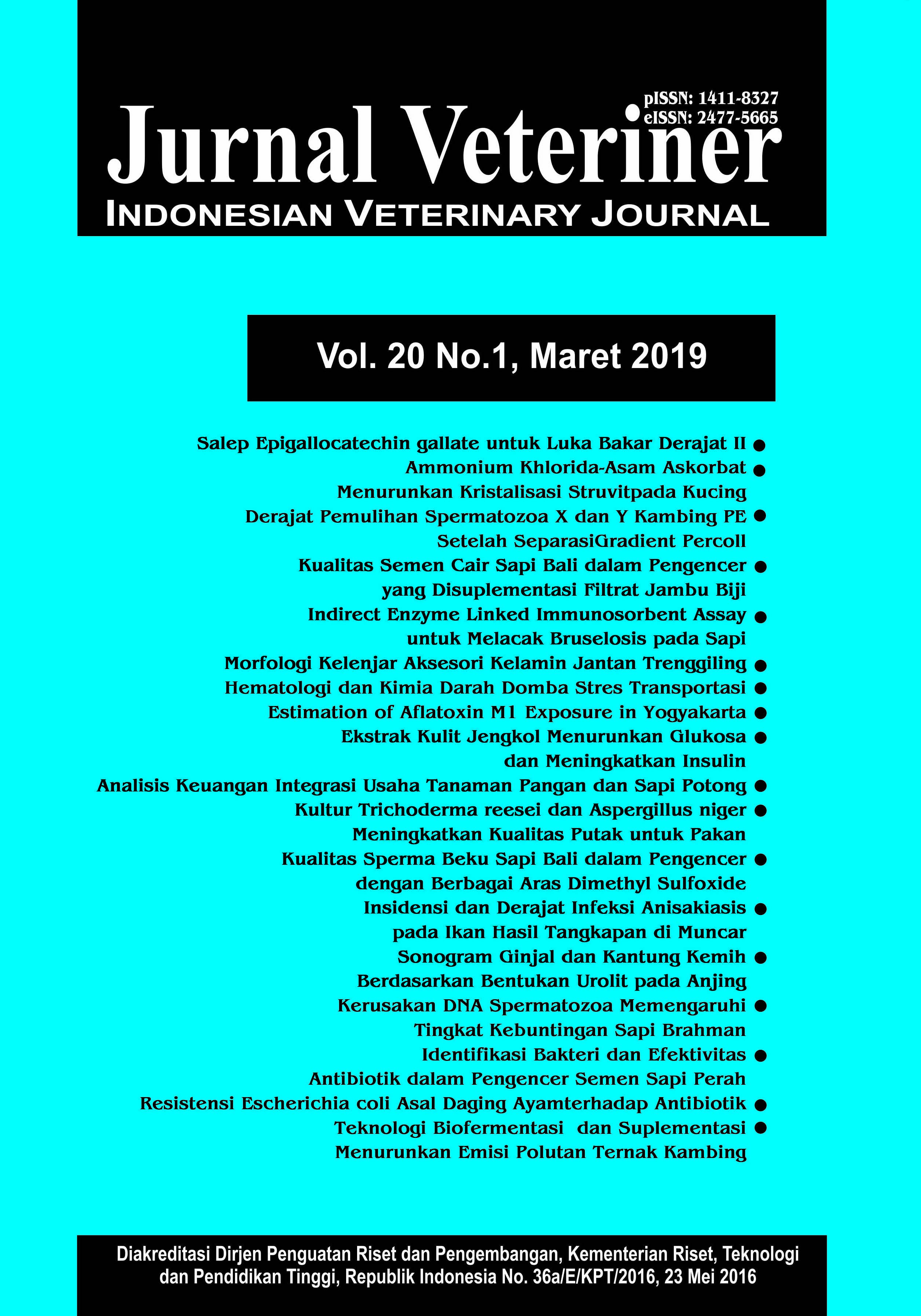Sonogram Ginjal dan Kantung Kemih Berdasarkan Variasi Bentukan Urolit pada Anjing (SONOGRAM OF KIDNEY AND URINARY BLADDER BASED ON SHAPE VARIATION OF UROLITH IN DOG)
Abstract
Urolithiasis is a condition of the presence of urine stones (urolite), crystals, or sediments in the urinary tract system. The urinary tract system that is prone to urolithiasis includes the kidney, ureter, can be found in the bladder (bladder), and in the urethra in excessive amounts. This study aims to analyze the relationship between urolite formation that occurs in the bladder and urolite formation that occurs in the kidneys through ultrasound examination. This study used 15 dogs indicated by urolithiasis. Ultrasonography shows urolites, crystals and sediments in the bladder sonogram and in the kidneys. Kidney sonograms and bladder sacs refer to the occurrence of urolithiasis in the bladder which will always be followed by the occurrence of urolithiasis in the kidneys. Generally urolites are in the mucosa and bladder lumen while the kidneys are in the medulla and renal pelvis. There are several sonograms showing the buildup only occurs in one part both in the bladder and also in the kidneys. The presence of urolite in the mucous portion of the bladder is due to the gravitational force. Whereas clumps of cloud in the form of debris cells found in the lumen occur due to agitation and contraction of the bladder therefore that urolites are mixed with urine. The renal medulla and pelvis in the kidneys are channels of filtration in the kidney urinary tract. This results in a large urolithic buildup due to filtration when the urine is delivered to the bladder.



















